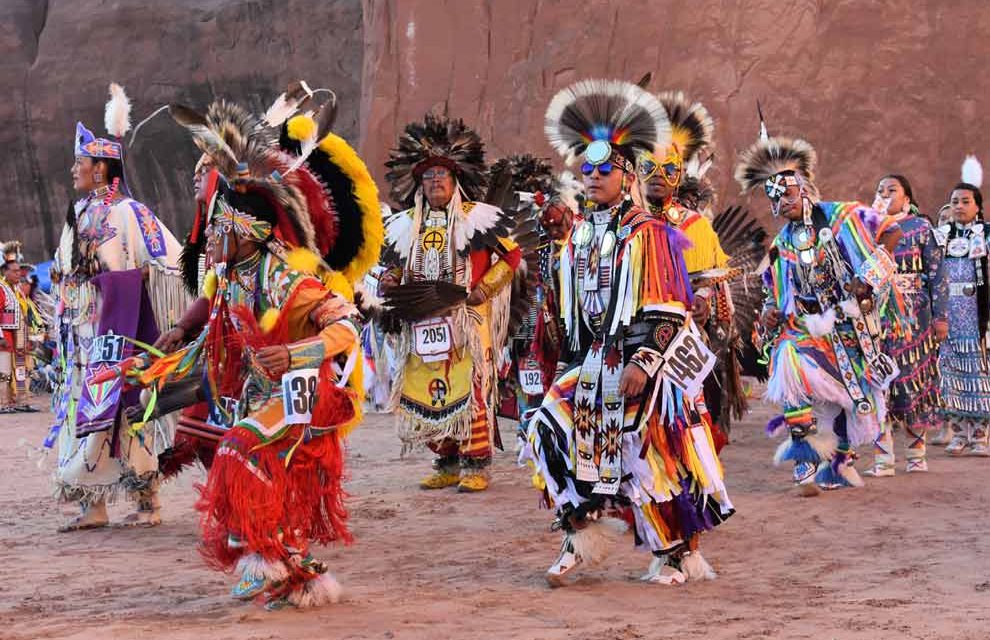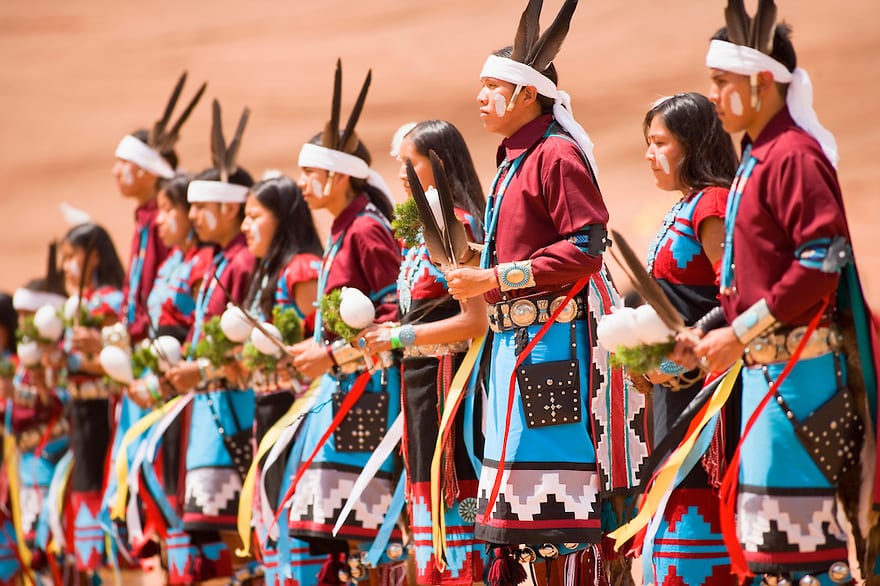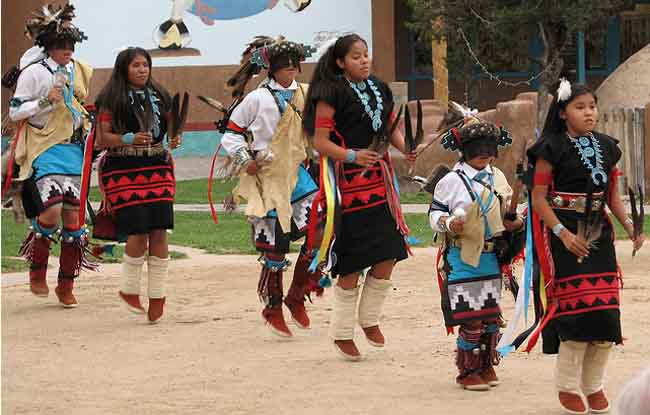
The Enduring Tapestry of Hózhó: Unveiling Traditional Navajo Ceremonies and Rituals
At the heart of Diné (Navajo) culture lies a profound and intricate system of ceremonies and rituals, designed not merely as religious observances, but as vital mechanisms for restoring and maintaining Hózhó – a concept encompassing universal harmony, balance, health, and beauty. These elaborate practices, passed down through generations via an oral tradition, are the bedrock of Diné identity, connecting individuals to their ancestors, their sacred landscape, and the Holy People (Diyin Dinéʼe). Far from static relics of the past, these ceremonies remain dynamic and essential forces in contemporary Diné life, addressing everything from physical ailments and psychological distress to rites of passage and community well-being.
The foundational principle of Hózhó dictates that humans exist in a delicate balance with the natural and spiritual worlds. When this balance is disrupted – through illness, misfortune, or encountering dangerous elements – a ceremony is required to re-establish equilibrium. This holistic approach views physical, mental, and spiritual health as interconnected, meaning a ceremony might be prescribed for a broken bone, a troubled mind, or even to bless a new home.
Central to the execution of these ceremonies are the Hataałii, or Singers/Medicine People. These highly revered individuals undergo decades of rigorous training, memorizing vast bodies of knowledge including thousands of songs, prayers, myths, and the precise procedures for various ceremonies. Their training is not merely academic; it involves deep spiritual commitment and an understanding of the intricate relationships between people, nature, and the cosmos. A Hataałii acts as a conduit, a living library of sacred knowledge, guiding the patient and community through the ritualistic journey back to Hózhó. The effectiveness of a ceremony is believed to stem directly from the meticulous and accurate performance by the Hataałii, emphasizing the power of precise language and action.
Many Diné ceremonies are performed within a hogan, the traditional Diné dwelling. The hogan itself is a sacred space, typically circular or octagonal, with its door facing east to greet the rising sun. Its architecture reflects Diné cosmology, symbolizing the universe and providing a protected environment where healing and spiritual renewal can occur. The structure of the hogan, with its poles representing sacred mountains and its central fire representing the heart, reinforces the connection between the individual, the home, and the broader cosmos.
Perhaps the most visually striking and spiritually potent elements within many healing ceremonies are the Iikááh, or sandpaintings. These ephemeral artworks are meticulously created on the floor of the hogan using colored sand, pulverized minerals, charcoal, and corn pollen. Each sandpainting depicts specific Holy People, sacred animals, natural phenomena, or mythological scenes associated with the particular ceremony being performed. They are not merely illustrations; they are believed to be sacred altars, portals through which the Holy People can enter and impart their healing power. The patient sits on the sandpainting, absorbing its healing energies. Crucially, once the ceremony concludes, the sandpainting is systematically destroyed, its sacred power dissipated back into the earth, preventing any misuse or lingering spiritual residue. This ephemeral nature underscores the transient and powerful nature of the ritual itself.

Diné ceremonies are incredibly diverse, each tailored to specific needs and situations. They can range from a few hours to nine days in length, involving varying numbers of participants and levels of complexity.
One of the most foundational and universally important ceremonies is the Blessingway (Hózhóójí). Unlike remedial ceremonies that address existing illnesses or misfortunes, the Blessingway is preventative and generative. It is performed to ensure general well-being, to promote good fortune, to bless a new hogan, a new marriage, or even a new truck. Its purpose is to attract good things and maintain the existing state of Hózhó. It is believed to bring harmony and positive energy into one’s life, serving as a constant reinforcement of the Diné ideal of living in balance.
For young Diné women, the Kinaaldá, or girl’s puberty ceremony, is a profoundly significant rite of passage. This four-day ceremony connects the young woman to Changing Woman (Asdzáá Nádleehé), one of the most revered Holy People, who embodies the life-giving and transformative power of the earth. During the Kinaaldá, the girl engages in activities like grinding corn, running daily to build endurance, and participating in an all-night sing. A crucial element is the molding of her body, where she is physically shaped by an older female relative, symbolizing her transformation into a strong, healthy, and fertile woman, ready to embrace her adult responsibilities and contribute to the continuity of her people.
More remedial in nature is the Enemyway (Anaaʼí Naadaaʼ), traditionally performed for warriors returning from battle or for anyone who has been exposed to violence or "enemy ghosts." In contemporary times, it has been adapted to address the spiritual and psychological trauma experienced by veterans and others dealing with PTSD or the lingering effects of conflict. This multi-day ceremony involves symbolic battles, purification rites, and the removal of harmful foreign influences, allowing the patient to shed the negative energies associated with violence and return to a state of peace and harmony.
The elaborate Nightway (Tłʼééʼjí) is a complex nine-night ceremony often performed in winter. It is known for its dramatic public performances featuring masked dancers, known as Yeibichai (Grandfather of the Gods), who embody the Holy People. These dancers perform intricate movements, accompanied by powerful chants, to bring healing and restore balance. The Nightway is typically performed for conditions like blindness, paralysis, or mental illness, seeking to draw upon the power of the Holy People to mend deep-seated ailments. The visual spectacle and communal participation make it one of the most publicly recognized Diné ceremonies.
These ceremonies are not isolated acts; they are deeply interwoven with Diné cosmology, which recognizes four sacred mountains marking the boundaries of Diné Bikéyah, the Navajo homeland. The land itself is imbued with spiritual significance, and ceremonies often reference specific geographical features, plants, and animals, further solidifying the intimate connection between the people, their traditions, and their ancestral territory.
Despite their deep roots, traditional Diné ceremonies face considerable challenges in the modern era. The dwindling number of fluent Navajo speakers, the pressures of assimilation, and the sheer time commitment required for training Hataałii all threaten the continuity of these practices. The economic realities of modern life often make it difficult for individuals to dedicate decades to ceremonial training, and the cost of sponsoring complex, multi-day ceremonies can be prohibitive for many families. There’s also the delicate balance of sharing cultural knowledge without risking commercialization or misrepresentation.
Recognizing the urgency, many Diné communities and cultural organizations are actively working to preserve and revitalize these traditions. Efforts include language immersion programs, mentorship initiatives for aspiring Hataałii, and documentation projects (carefully managed to respect sacred boundaries). There is a concerted push to engage younger generations, helping them understand the profound value and relevance of their cultural heritage in navigating the complexities of the contemporary world.
In an ever-changing world, the traditional Diné ceremonies and rituals stand as a testament to the resilience, adaptability, and spiritual depth of the Navajo people. They are not simply ancient practices, but living traditions that continue to provide comfort, healing, and a profound sense of identity. Through the intricate poetry of their chants, the ephemeral beauty of their sandpaintings, and the guiding wisdom of their Hataałii, these ceremonies perpetually seek to restore and maintain Hózhó, ensuring that harmony and balance remain at the core of Diné life.



